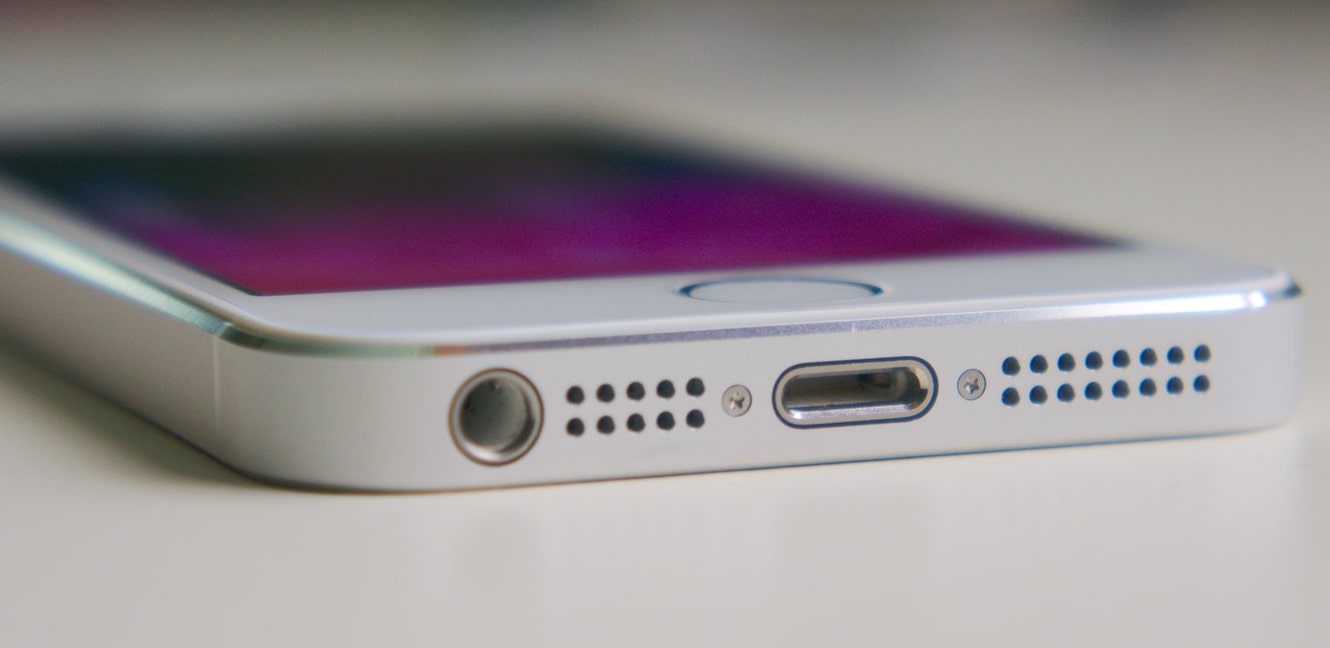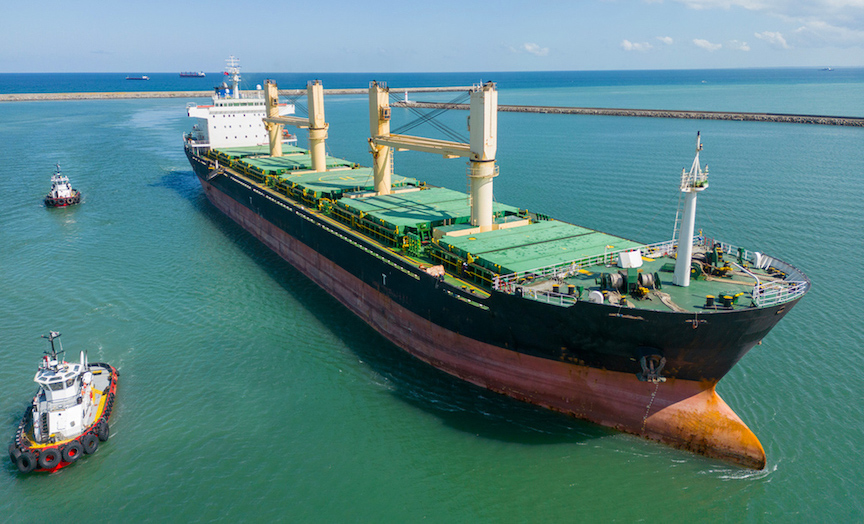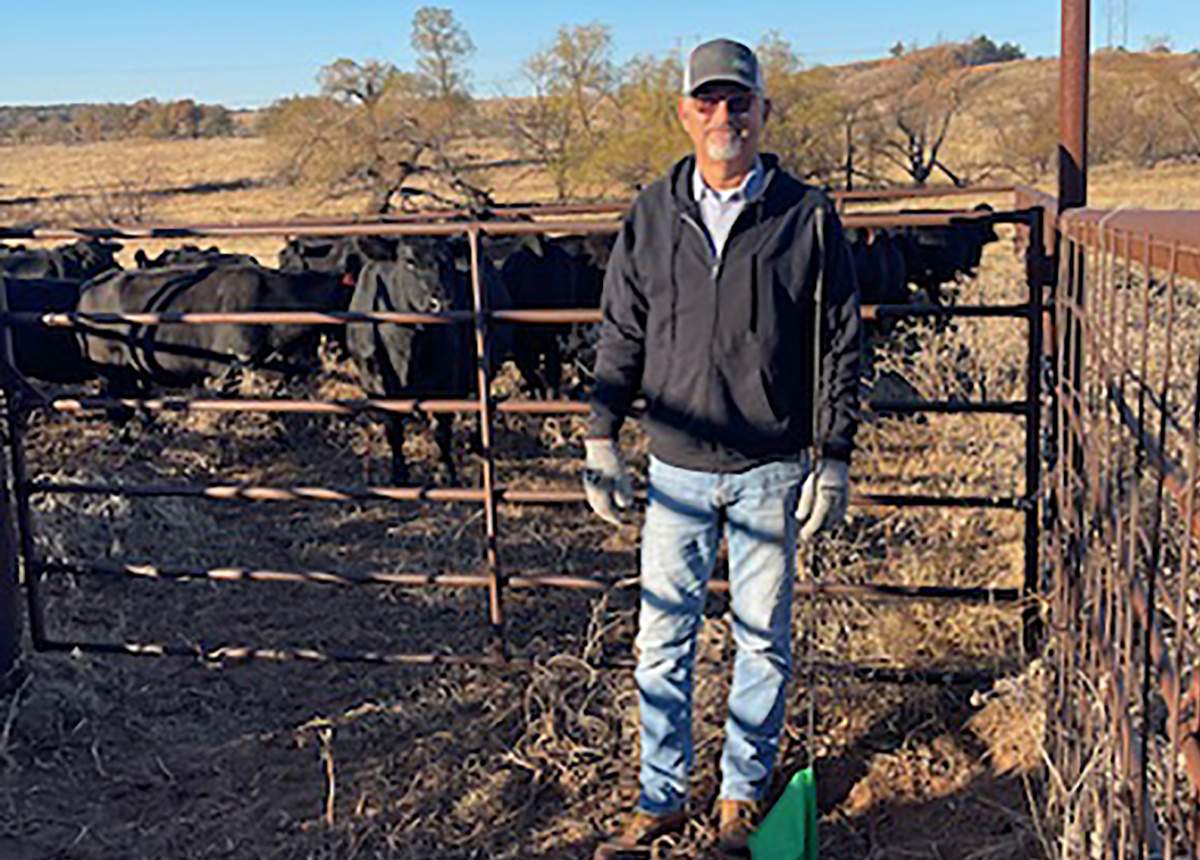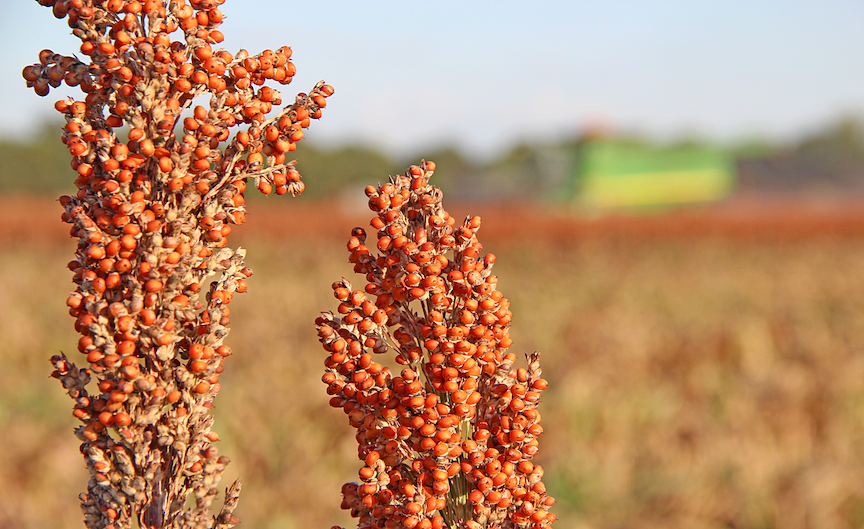Farmer Shocked After Lost iPhone Circles Globe, Returns Home

Abandon hope, all ye who lose a cellphone in an ocean of grain?
When central Oklahoma farmer Kevin Whitney’s iPhone slipped from his pocket and fell beneath 220,000 bushels of grain sorghum bound for parts unknown, he assumed the device was forever gone. Instead, the iPhone took a 20,000-mile roundtrip across the globe, returning nine months later from Japan into the hands of a stunned Whitney.
“Amazing,” he says. “I know farming is a global business, but this was personal and showed me how small our agricultural world is. It became such a cool and unlikely story because there was a whole lot more going on than just a lost phone.”
October Surprise
In the fall of 2013, as combines rolled across grain sorghum (milo) fields in Grady County, Oklahoma, Kevin Whitney was on the receiving end of steady crop loads as manager of the Apache Farmers Co-Op branch in Chickasha, roughly 40 minutes southwest of Oklahoma City.

Bathed in dust and October sunshine, under the tower of a 220,000-bushel concrete elevator, Whitney crouched beside a trailer and tugged at a stubborn hopper door as fresh-cut grain poured across a 10’-long by 5’-wide grate split by cover bars with 4” gaps.
As Whitney worked on the hopper—with an iPhone 5 wedged into a slick, black plastic case inside his unclasped breast pocket—he bent a fraction low and felt the phone shoot from his shirt. In a frozen moment, he watched the phone drop into the grain flow and rocket between the grate bars to the pit below. No lunging, flailing, or scrambling after the device. Game over.
“I was beyond disappointed because it was loaded with photos from my daughter’s wedding, but the phone was done,” says Whitney, who presently runs a cow-calf operation and owns a spraying business, American AG Service. “Nothing to say and nothing to do because there was no retrieval possible. I knew where the phone was and I knew I couldn’t get to it. I gave up right away.”
Out of sight, out of mind. The 4 oz. phone, measuring roughly 5” tall and 2.5” wide, had fallen 3’ below the grate onto a series of conveyor belts, buckets, and legs—finally resting within the massive concrete tombstone, embedded with millions of red- and brown-shaded, spherical grains of milo less than 4 mm in length, each carrying about the same kernel weight as wheat.
However, Whitney’s unwelcome October surprise was about to turn into a July blessing.
Stowaway
Departing the concrete elevator at Apache Farmers Co-Op in Chickasha, the stowaway iPhone 5 was loaded into a grain trailer and trucked to a northeast Oklahoma facility in Inola—part of the Arkansas River navigation system.

Placed on a barge at Inola, Whitney’s iPhone floated down the Arkansas River, changed flows to the Mississippi River, and arrived at its final U.S. destination—Convent, Louisiana, where it was dumped onto a carrier ship bound for Japan.
“Imagine all the loading and unloading that took place to that point, with a lot more to come,” Whitney describes. “It was cushioned inside dry grain, but it still easily could have gotten smashed at so many points.”
Next stop? Panama.
Globetrotter
Inside the belly of a bulk vessel as a tiny speck in a 2-million-bushel load of grain sorghum destined for a feed mill in Japan, Whitney’s iPhone left Louisiana and entered the Gulf of Mexico, slid into the Caribbean Sea, exited through the Panama Canal, chugged across the Pacific Ocean to Japan, and offloaded at a feed mill in Fukushima.

During the screening process, the iPhone was spotted by a vigilant—and caring—mill worker.
“It’s amazing on top of amazing,” Whitney explains. “The guy who found it could have tossed it in the garbage or kept it, but he thought, ‘Somebody across the world lost their cell. I’m gonna try and get it back to him.’”
“It took effort and concern to return my phone,” Whitney continues. “The mill worker went up his chain and then somebody else there went higher up the chain, and it turned into a phone call to their source—all the way in Convent, Louisiana. The folks in Japan then airmailed my phone to Louisiana. That was a lot of people in the agriculture grain trade industry trying to help someone they didn’t even know.”

In July 2014, nine months after accidentally turning his cell into a globetrotter, Whitney was rocked on his heels by a surreal phone call from Convent, Louisiana: “Did you lose a cell phone?”
“Yes, I did—almost a year ago,” answered Whitney.
“Well, I’ve got your phone, responded the caller. “What do you want me to do with it?”
Incredible Age
As the final leg of a near 20,000-mile journey, the iPhone was mailed from a grain facility in Convent to Chickasha—and arrived in superb condition.
“The guy in Convent charged it up when he got it from Japan and found out it belonged to me. He told me it’s not really that unusual for guys to lose cellphones in grain,” Whitney says. “He mailed it to me and I charged it again when I got it and started using it immediately. It was in the exact same condition as the day I lost it and all of the wedding pictures were right there.”
Despite a lifetime in agriculture, Whitney’s view of harvest and grain transport has changed.
“For a lot of people in the grain business, whether you’re a farmer or running a farm-related business, you never think about the grain after it’s out of your hands. Once you unload, you put it out of your mind because you’ve done your part. But my eyes have been opened.”
“Grain in central Oklahoma goes all over the planet and it’s that way in every U.S. state. We’re living in an incredible age of speed—grain grown in your field, moved across the globe, and consumed on the other side of the planet. It really shows how amazing our U.S. grain industry is.”
Sold
In 2014, Whitney’s lost iPhone story went viral, bouncing from local news to nationwide coverage on the Today Show to global reports via international media. However, social media stardom was not Whitney’s cup of tea. “I was done,” he says. “I got to the point where I literally quit answering my phone.”
Where does Whitney carry his smartphone today?
“In my cellphone holster where it’s supposed to go,” he exclaims. “I’ve always had a cellphone holster, but I didn’t use it on the day I lost my iPhone 5.”
And almost a decade after Whitney’s October mishap, where is the slippery iPhone 5?

“In hindsight, I should have kept it for nostalgia, but after several years it got time for an upgrade,” he laughs. “I went to a local phone store and called my wife, Alison: ‘I’m gonna upgrade my cell. Should I keep this old one?’”
“She told me, ‘It’s such a cool story so you’ve got to keep that old phone,’” Whitney recounts, while wearing a wide grin. “But when I told her the store was offering me $400 for it, she said, ‘Sold.’”
For more from Chris Bennett (cbennett@farmjournal.com or 662-592-1106), see:
While America Slept, China Stole the Farm
Priceless Pistol Found After Decades Lost in Farmhouse Attic
Cottonmouth Farmer: The Insane Tale of a Buck-Wild Scheme to Corner the Snake Venom Market
Tractorcade: How an Epic Convoy and Legendary Farmer Army Shook Washington, D.C.









